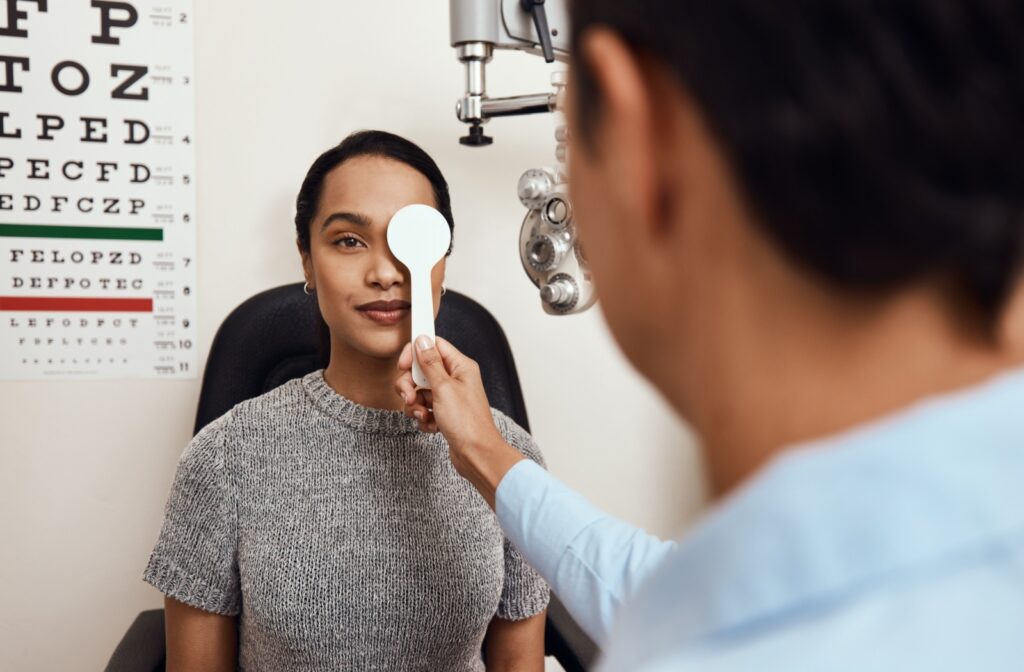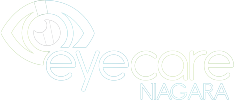Visual acuity numbers like 20/30 can be confusing, but they offer valuable insights into how clearly you see compared to the average person.
20/30 vision means you need to be 20 feet away to see what someone with 20/20 vision can see from 30 feet. It’s a mild reduction in clarity that often doesn’t require correction, but depending on your lifestyle or job, even a small change in distance vision can impact safety or comfort.
What Are Visual Acuity Measurements?
Visual acuity refers to the sharpness and clarity of your vision, typically measured using the familiar eye chart during your eye exam. The Snellen chart, featuring rows of letters that decrease in size, remains the standard tool optometrists use to assess how well you see at a distance of 20 feet.
The fraction format of vision measurements tells a straightforward story. The first number represents the distance at which you stand from the eye chart, always 20 feet in standard testing. The second number indicates the distance at which a person with normal vision could read the same line you’re reading.
When we say someone has 20/30 vision, it means they must stand 20 feet away to see what a person with normal vision can see from 30 feet away. This indicates slightly reduced visual acuity compared to the 20/20 standard, though many people with 20/30 vision function perfectly well in their daily activities.
Several factors influence your visual acuity measurements.
- Refractive errors such as myopia (nearsightedness), hyperopia (farsightedness), and astigmatism commonly affect these results.
- Age-related changes
- Eye diseases
- Temporary conditions like dry eyes
These are a few of the factors that can impact your performance during vision testing.
How 20/30 Vision Might Affect Daily Life
Here are a few of the ways that having 20/30 vision might impact your day-to-day life:
- Everyday tasks: Most people with 20/30 vision have little trouble reading, using computers, or recognizing faces at typical distances.
- Driving: Some individuals may struggle to read distant road signs, especially at night or in poor weather, even though corrective lenses are usually not required by law for 20/30 vision.
- Workplace impact: Jobs that rely on sharp distance vision, like piloting, commercial driving, or operating detailed machinery, may require correction to meet specific visual standards.
- Sports and recreation: Activities that demand tracking fast-moving objects, like tennis or golf, can be slightly more challenging without correction.
While 20/30 vision is generally manageable, certain tasks may feel less comfortable or precise without correction, especially when clarity at a distance is important.

Treatment Options for 20/30 Vision
Here are a few treatment options that your optometrist might suggest if you’re looking for ways to improve your vision and ocular health:
Eyeglasses
Eyeglasses are often the simplest and most effective way to correct 20/30 vision. Using a mild prescription can bring your vision up to 20/20 or better, making tasks like driving or attending presentations more comfortable. With modern lens technology, you can enjoy clear vision in lightweight, stylish frames.
Contact Lenses
For those with active lifestyles or a preference for an unobstructed view, contact lenses can offer a convenient solution. Daily disposable lenses provide hygiene and ease of use, while specialty lenses can also address conditions like astigmatism alongside your standard prescription.
Lifestyle Modifications
Many people adapt well to 20/30 vision with small adjustments. Sitting closer to screens, using adequate lighting when reading, and allowing extra time for visually demanding tasks can improve comfort. These changes may help you function well without the need for prescription correction.
How to Learn Your Vision Score
If you’re unsure what your current vision rating is, whether it’s 20/20, 20/30, or something else, the most accurate way to find out is through a comprehensive eye exam. During your visit, your optometrist will measure your visual acuity using a standard eye chart and assess how clearly you can see at a distance.
An eye exam doesn’t just reveal your vision score; it also checks for refractive errors, eye health issues, and changes in prescription that may affect your daily comfort. If it’s been more than a year or you’re noticing any vision changes, booking an exam is the best step toward clear, comfortable sight.
Book Your Eye Exam Today
If you want to know your precise vision score, such as whether you have 20/30 or 20/20 vision, a comprehensive eye exam is the way to find out. At EyeCare Niagara, we will measure how clearly you see at a distance and check for any changes that might affect your vision or comfort. An exam also helps identify issues like refractive errors or eye strain that may be affecting you without realizing it. Book your eye exam today to learn your vision score and get expert guidance on your eye health.




